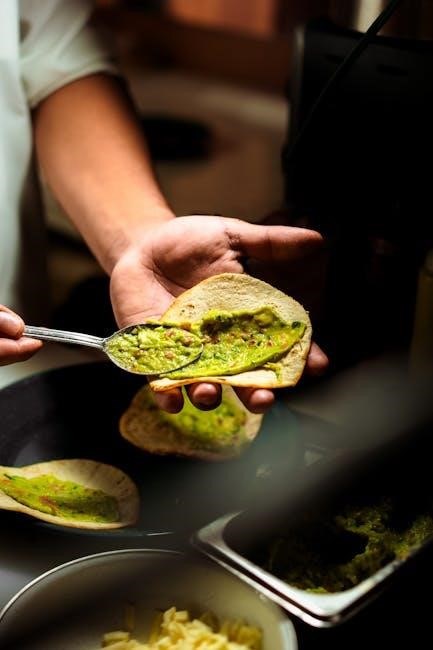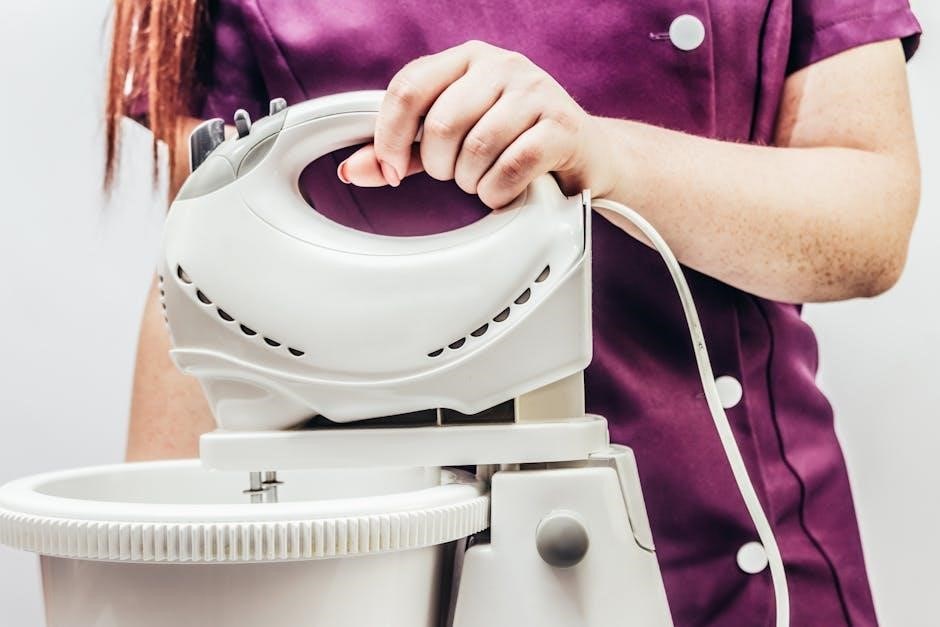Magic Chef Dehydrator Manual: A Comprehensive Guide
Unlock the full potential of your Magic Chef dehydrator with this comprehensive guide! This resource contains vital safety, installation, operating, and troubleshooting information․ Carefully read this manual before using your dehydrator to ensure proper use and maintenance․ Preserve food’s natural flavors and nutrients!
Magic Chef dehydrators offer an efficient way to preserve various foods, from fruits and vegetables to meats and herbs․ These appliances are designed to remove moisture, extending shelf life while retaining flavor and nutritional value․ This introduction will explore the world of Magic Chef dehydrators, highlighting their utility in modern kitchens․
Magic Chef appliances are known for their compact designs and user-friendly interfaces, making them accessible to both novice and experienced users․ Whether you’re aiming to create healthy snacks, preserve seasonal harvests, or experiment with homemade jerky, a Magic Chef dehydrator can be a valuable tool․
Their dehydrators typically feature multiple trays, allowing for simultaneous drying of different food items․ With adjustable temperature settings and timers, they provide control over the dehydration process, ensuring optimal results for various food types․
This guide will delve into the specifics of using and maintaining your Magic Chef dehydrator, ensuring you can safely and effectively preserve your favorite foods for years to come․ From initial setup to troubleshooting common issues, we’ll cover everything you need to know to make the most of your appliance․
Key Features and Benefits
Magic Chef dehydrators come equipped with several key features designed to enhance the food preservation process․ One of the primary benefits is the ability to preserve foods naturally, without the need for artificial preservatives or additives․ This allows you to enjoy healthy, homemade snacks and ingredients with confidence․
A significant feature is the adjustable thermostat, which enables you to control the drying temperature, crucial for different types of food․ Lower temperatures are ideal for delicate herbs and fruits, while higher temperatures are suitable for meats․
Many models also include a built-in timer, allowing you to set the dehydration time and automatically shut off the appliance, preventing over-drying․ The stackable trays are another key feature, providing ample space for dehydrating large quantities of food simultaneously․
Furthermore, the efficient design ensures consistent airflow, promoting even drying across all trays․ This reduces the need for constant monitoring and tray rotation․

By using a Magic Chef dehydrator, you can reduce food waste by preserving surplus produce, save money by making your own snacks, and enjoy the satisfaction of creating healthy, homemade foods․ These features combine to make Magic Chef dehydrators a valuable addition to any kitchen․
Understanding Your Magic Chef Model
Familiarizing yourself with your specific Magic Chef dehydrator model is crucial for optimal performance and safety․ Each model may have unique features and operational nuances that are essential to understand before use․ Start by locating the model number, typically found on a sticker at the back or bottom of the unit․
Once you have the model number, consult the user manual for detailed information about its components, controls, and functionality․ The manual will outline the function of each button, dial, and indicator light․ Pay close attention to the descriptions of the temperature settings and timer functions, as these are vital for achieving the desired dehydration results․
Different models may have varying tray configurations, heating element wattages, and airflow designs․ Understanding these specifics will help you adjust your food preparation and dehydration techniques accordingly․
Furthermore, the manual will provide guidance on the recommended load capacity for each tray and the overall unit․ Overloading the dehydrator can impede airflow and lead to uneven drying․
By thoroughly understanding your Magic Chef model, you can maximize its efficiency, extend its lifespan, and consistently produce high-quality dehydrated foods․
Safety Instructions and Precautions
Prioritizing safety is paramount when operating any electrical appliance, and your Magic Chef dehydrator is no exception․ Always adhere to the following safety instructions and precautions to prevent accidents, injuries, or damage to the unit․
Before plugging in the dehydrator, ensure that the power outlet’s voltage matches the appliance’s requirements, as indicated on its label․ Never use the dehydrator with a damaged power cord or plug․ If either is damaged, have it replaced by a qualified technician․
Position the dehydrator on a stable, level surface, away from water sources and flammable materials․ Allow at least 6 inches of clearance around the unit for proper air circulation․
Never immerse the dehydrator’s base in water or any other liquid․ To clean the base, wipe it with a damp cloth only․ Always unplug the dehydrator before cleaning or performing any maintenance․
Do not operate the dehydrator unattended․ Keep it out of reach of children and pets․ Use oven mitts or heat-resistant gloves when handling hot trays or food․
Avoid overloading the trays, as this can obstruct airflow and lead to uneven drying․ Never block the dehydrator’s vents, as this can cause overheating․
If the dehydrator malfunctions, unplug it immediately and consult the troubleshooting section of the manual․ Do not attempt to repair the unit yourself․

Initial Setup and Preparation
Before embarking on your food dehydration journey with your Magic Chef dehydrator, proper setup and preparation are crucial for optimal performance and food safety․ Follow these initial steps to ensure a smooth start․
Begin by carefully unpacking your new Magic Chef dehydrator and verifying that all components are present, including the base unit, trays, and any included accessories․ Consult the parts list in your user manual to confirm completeness․
Thoroughly wash the dehydrator trays and any other removable parts with warm, soapy water․ Rinse them well with clean water and allow them to air dry completely․ This step removes any manufacturing residues and ensures food safety․
Select a suitable location for your dehydrator․ It should be a stable, level surface away from water sources and flammable materials․ Ensure adequate ventilation around the unit, allowing at least six inches of clearance on all sides for proper airflow․
Before first use, it is advisable to run the dehydrator empty for about 30 minutes to eliminate any residual odors․ Set the temperature to a moderate level and allow the unit to operate in a well-ventilated area․
Familiarize yourself with the dehydrator’s controls and settings; Refer to your user manual for detailed instructions on temperature adjustment, timer operation, and other features specific to your model;
Operating Instructions: A Step-by-Step Guide
Once your Magic Chef dehydrator is properly set up, follow these step-by-step operating instructions to achieve perfectly dehydrated foods․

Step 1: Food Preparation: Prepare your food items by washing, slicing, or trimming them according to your chosen recipe or dehydration guidelines․ Ensure that slices are uniform in thickness for even drying․
Step 2: Tray Loading: Arrange the prepared food items on the dehydrator trays in a single layer, ensuring that they are not overlapping․ This allows for optimal air circulation and even dehydration․
Step 3: Tray Stacking: Carefully stack the loaded trays onto the dehydrator base, following the manufacturer’s instructions for proper alignment and stability․
Step 4: Temperature and Time Setting: Consult your user manual or a reliable dehydration chart to determine the appropriate temperature and drying time for the specific food you are dehydrating․ Set the dehydrator’s controls accordingly․
Step 5: Start Dehydration: Turn on the dehydrator and allow it to run for the set time․ Check the food periodically to assess its progress․ Rotate the trays if necessary to ensure even drying․
Step 6: Completion and Cooling: Once the food is adequately dehydrated, turn off the dehydrator and allow the food to cool completely before storing it in airtight containers․
Recommended Dehydration Times and Temperatures
Achieving optimal dehydration results with your Magic Chef dehydrator hinges on selecting the correct time and temperature settings for different food types․ These parameters significantly impact the final product’s texture, moisture content, and preservation․
Fruits: Generally, fruits require lower temperatures (around 130-140°F or 54-60°C) and longer drying times (6-36 hours)․ Consider apples, bananas, and berries․ Times vary based on thickness and sugar content․
Vegetables: Most vegetables dehydrate well at 125-135°F (52-57°C) over 5-18 hours․ Root vegetables like carrots need longer times․ Leafy greens like spinach will dehydrate faster․
Meats (Jerky): For safety, meats require higher temperatures (160-165°F or 71-74°C) to eliminate bacteria․ Drying times range from 4-12 hours, depending on the meat thickness and desired texture․
Herbs: Herbs dehydrate quickly at low temperatures (95-115°F or 35-46°C) within 1-4 hours․ Monitor closely to prevent over-drying and loss of essential oils․
Factors Affecting Times: Humidity, food thickness, and dehydrator load impact drying times․ Adjust settings accordingly․ Always consult reliable dehydration charts for specific food recommendations․
Food Preparation Tips for Optimal Results
Proper food preparation is crucial for achieving optimal dehydration results with your Magic Chef dehydrator․ Uniformly prepared ingredients ensure consistent drying, better preservation, and enhanced flavor․ Here are some essential tips:
Slicing: Cut food into uniform slices, typically 1/8 to 1/4 inch thick․ Consistent thickness ensures even drying and prevents some pieces from becoming overly dry while others remain moist․
Pre-Treatment: Some fruits, like apples and bananas, benefit from pre-treatment to prevent browning․ Soak them in lemon juice or ascorbic acid solution before dehydrating․
Blanching: Blanching vegetables before dehydration helps to preserve their color and nutrients․ It also softens the tissues, allowing for faster drying․
Marinating: Marinate meats for jerky to infuse flavor and tenderize the texture․ Ensure the marinade is fully absorbed before placing the meat in the dehydrator․
Loading Trays: Arrange food in a single layer on the dehydrator trays, ensuring adequate space for air circulation․ Avoid overcrowding, which can lead to uneven drying․
Rotation: Rotate trays periodically during the dehydration process to promote even drying, especially in dehydrators with inconsistent airflow․

Cleaning and Maintenance Procedures
Maintaining your Magic Chef dehydrator properly ensures its longevity and optimal performance․ Regular cleaning prevents the buildup of food particles and residue, which can affect the dehydrator’s efficiency and hygiene․ Follow these cleaning and maintenance procedures:
Unplug the Dehydrator: Before cleaning, always unplug the dehydrator from the power outlet to prevent electrical shock․
Wash Trays and Components: Wash the dehydrator trays, drip sheets, and other removable components with warm, soapy water․ Rinse thoroughly with clean water and dry immediately․
Wipe the Base Unit: Wipe the base unit and the interior of the dehydrator with a damp cloth․ Avoid immersing the base unit in water or any other liquid․
Remove Stubborn Residue: For stubborn food residue, use a non-abrasive sponge or brush․ You can also soak the trays in warm, soapy water for a few minutes before scrubbing․
Dry Thoroughly: Ensure all parts are completely dry before reassembling the dehydrator․
Check for Damage: Regularly inspect the dehydrator for any signs of damage, such as cracks or frayed cords․ If you notice any damage, discontinue use and contact customer service․
Troubleshooting Common Issues
Even with proper use and maintenance, you may encounter issues with your Magic Chef dehydrator․ Here are solutions to common problems:
Dehydrator Not Turning On: Ensure the dehydrator is properly plugged into a functioning outlet․ Check the power cord for damage․ Refer to the user manual for reset instructions․
Uneven Dehydration: Rotate trays during the dehydration process for even drying․ Ensure food slices are uniform in thickness․
Food Not Dehydrating Properly: Verify the temperature setting is appropriate for the type of food being dehydrated․ Do not overload trays․
Unpleasant Odors: Clean the dehydrator thoroughly after each use to prevent odor buildup․ Use odor-absorbing materials like baking soda․
Dehydrator Overheating: Ensure proper ventilation around the dehydrator․ Do not place it in direct sunlight or near heat sources․
Timer Malfunction: If the timer isn’t working, consult the manual for troubleshooting steps․ Contact customer support if the problem persists․
If issues persist, consult the Magic Chef customer support for further assistance․
Finding Your Model’s Specific Manual
Locating the correct manual for your specific Magic Chef dehydrator model is crucial for optimal use and maintenance․ Here’s how to find it:
Check the Product Packaging: The original packaging often contains the manual or a link to download it․
Look on the Dehydrator: Some models have a sticker or plate with the model number printed on them․ This is typically found on the base or back of the unit․
Visit the Magic Chef Website: Navigate to the “Support” or “Manuals” section of the official website․ Enter your model number in the search bar to find the corresponding manual․
Online Manual Databases: Websites like ManualsOnline․com or ManualPDF․in offer a wide range of appliance manuals, including Magic Chef dehydrators․ Search using your model number․
Contact Magic Chef Customer Support: If you can’t find the manual online, contact Magic Chef’s customer support․ Provide them with your model number, and they can email you a digital copy․
Having the correct manual ensures you have the precise instructions for your dehydrator model․
Where to Find Replacement Parts
Over time, certain components of your Magic Chef dehydrator might require replacement due to wear and tear․ Here’s where you can find genuine or compatible replacement parts:
Magic Chef Official Website: Check the “Parts” or “Support” section for replacement trays, heating elements, or other components specifically designed for your model․
Appliance Parts Retailers: Online retailers specializing in appliance parts, such as AppliancePartsPros․com or RepairClinic․com, often carry Magic Chef dehydrator parts․
Local Appliance Repair Shops: Contact local appliance repair shops․ They may have replacement parts in stock or can order them for you․
Amazon and eBay: These online marketplaces offer a wide selection of replacement parts from various sellers․ Make sure to verify the compatibility with your specific model before purchasing․
Authorized Service Centers: Locate authorized Magic Chef service centers in your area․ They can provide genuine replacement parts and professional repair services․
When searching for replacement parts, always have your dehydrator’s model number handy to ensure compatibility․ Using the correct parts will maintain the performance and lifespan of your appliance․
Exploring Recipes and Dehydration Ideas
Unleash your culinary creativity with your Magic Chef dehydrator! Beyond basic fruits and vegetables, a world of delicious and healthy dehydrated treats awaits․ Here are some exciting recipes and dehydration ideas to inspire you:
Fruit Leathers: Puree your favorite fruits and spread them thinly on dehydrator sheets for a naturally sweet and chewy snack․
Vegetable Chips: Slice vegetables like zucchini, sweet potatoes, or kale thinly, season them, and dehydrate for a healthy alternative to potato chips․
Jerky: Marinate lean meats and dehydrate them to create savory and protein-rich jerky․
Herbs and Spices: Dry your own herbs and spices for intense flavor in your cooking․
Trail Mix Ingredients: Dehydrate fruits, nuts, and seeds to create custom trail mixes for hiking or snacking․
Pet Treats: Make healthy and natural pet treats by dehydrating meat or vegetable scraps․
Yogurt Melts: Blend yogurt with fruit and freeze-dry small drops for a fun and healthy snack for kids․
Explore online resources, cookbooks, and blogs dedicated to dehydration for even more recipes and inspiration․ Experiment with different flavors and textures to discover your favorite dehydrated creations!